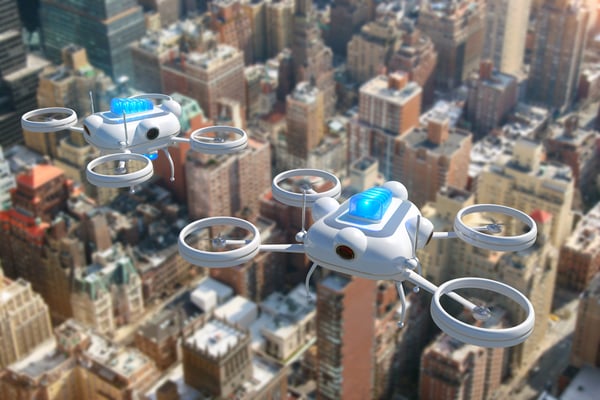
Unmanned aircraft systems (UAS), or drones as they’re more commonly called, can be a huge asset in a number of public safety efforts, particularly for law enforcement, first responders, search and rescue and humanitarian applications.
Drones are changing the nature of public safety. They are significantly improving public safety measures by getting to affected areas faster and reporting data with less risk to human responders. Plus, employing drones for public safety is often more cost-effective and time-efficient than traditional methods alone. And with the help of the enhanced situational awareness abilities of Operational Intelligence (OI) technology, UAS can be safely operated in shared airspace.
Here are a few of the ways drones have become one of the most important public safety assets we have today:
Law Enforcement
Cities across the country have begun to incorporate UAS technology into the safety measures of their police, fire and engineering departments. The city of Cape Giradeau in Missouri, for example, recently approved the purchase of drones and hopes to begin using them by early 2017.
The city’s Police Chief, Wes Blair, believes his department will actually see the biggest benefit of drones because they can help the police department to obtain aerial views of major crime scenes and public safety situations involving large crowds or public events, like parades. Blair’s department and others across the country are confident that drones will provide future benefits to their departments that have not been envisioned yet.
Emergency Operations
One of the drones Cape Giradeau plans to purchase will have thermal night vision. The fire chief of the city believes that these drones will be able to provide real-time, aerial photos of major fire scenes to help direct equipment and manpower precisely where needed. Sending out drones to survey an affected area requires minimal personnel and can be done in a matter of minutes following a disaster.
Drones with video and infrared cameras can be excellent tools to improve situational awareness of critical incidents such as wildfires or other disasters such as severe flooding as well as search and rescue missions. Thermal imaging cameras in particular can help firefighters see through smoke when conducting missions.
Because these drones also have the ability to carry light payloads, they can drop a life jacket to someone struggling in the water or deliver first aid supplies during rescue operations or first responder emergencies even in remote or dangerous locations.
Humanitarian Applications
Drones used by humanitarian organizations are becoming literal lifesavers in times of crisis. UAS technology can help to find survivors in disaster zones, deliver medical supplies and carry out other humanitarian tasks. From medical testing and supply delivery in Malawi, Africa to providing medical equipment to communities hit by a massive earthquake in Nepal, drones are revolutionizing the way humanitarian organizations are helping communities around the world respond to disasters or conflicts.
Drones can empower communities around the world by giving them immediate and easy access to geo-data, which is information that has until recently only been available to developed countries who have the required funds to buy expensive satellites or employ manned aircrafts.
Many law enforcement and public safety organizations are lobbying for access to the latest aerial drone technology for its potential to save lives, prevent injuries and support humanitarian efforts.
When combined with OI technology, UAS operators and public safety organizations can ensure the safety of the national airspace as well as deliver sustained safety measures for communities across the country and throughout the globe.
Want to learn more about how Operational Intelligence (OI) technology provides the foundation needed for drones to take flight for public safety? Download our eBook “Operational Intelligence: Enabling the Future of Commercial Unmanned Operations.
DroneBlog


